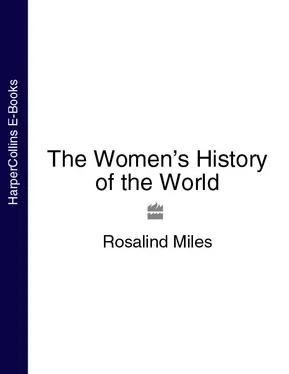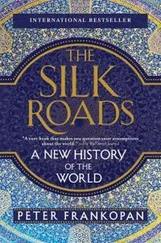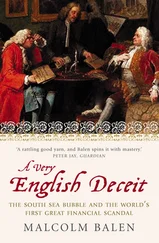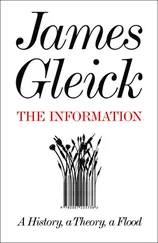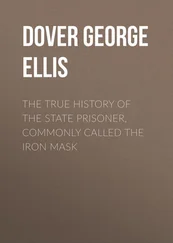Rosalind Miles - The Women’s History of the World
Здесь есть возможность читать онлайн «Rosalind Miles - The Women’s History of the World» — ознакомительный отрывок электронной книги совершенно бесплатно, а после прочтения отрывка купить полную версию. В некоторых случаях можно слушать аудио, скачать через торрент в формате fb2 и присутствует краткое содержание. Жанр: unrecognised, на английском языке. Описание произведения, (предисловие) а так же отзывы посетителей доступны на портале библиотеки ЛибКат.
- Название:The Women’s History of the World
- Автор:
- Жанр:
- Год:неизвестен
- ISBN:нет данных
- Рейтинг книги:5 / 5. Голосов: 1
-
Избранное:Добавить в избранное
- Отзывы:
-
Ваша оценка:
- 100
- 1
- 2
- 3
- 4
- 5
The Women’s History of the World: краткое содержание, описание и аннотация
Предлагаем к чтению аннотацию, описание, краткое содержание или предисловие (зависит от того, что написал сам автор книги «The Women’s History of the World»). Если вы не нашли необходимую информацию о книге — напишите в комментариях, мы постараемся отыскать её.
The Women’s History of the World — читать онлайн ознакомительный отрывок
Ниже представлен текст книги, разбитый по страницам. Система сохранения места последней прочитанной страницы, позволяет с удобством читать онлайн бесплатно книгу «The Women’s History of the World», без необходимости каждый раз заново искать на чём Вы остановились. Поставьте закладку, и сможете в любой момент перейти на страницу, на которой закончили чтение.
Интервал:
Закладка:
Hunting was a whole-group activity, not a heroic solo adventure.
As Myra Shackley explains, ‘successful hunting, especially of large animals travelling in herds such as reindeer, horses, mammoth, bison and woolly rhinoceros meant co-operation in bands’. 30To this day, all members of hunting societies, including women and children, join in hunting/beating activities as a matter of course. In their own right, too, women have long been known to hunt smaller, slower or safer animals. An eighteenth-century trader of the Hudson Bay Company in Canada discovered an Eskimo woman who had kept herself alive for seven months on the mid-winter icecap by her own hunting and snaring ‘when there was nothing but desolation for 1000 miles around’. 31
Hunting did not mean fighting.
On the contrary, the whole purpose of group organization was to ensure that primitive man did not have to face and do battle with his prey. The first humans, as Shackley shows, worked together to avoid this, ‘driving animals over cliffs to their deaths (as certainly happened at the Upper Paleolithic site of Solutre) or using fire to stampede them into boggy ground (the method used at Torralba and Ambrona)’. 32Cro-Magnon cave paintings from the Dordogne region of France vividly depict a mammoth impaled on stakes in a pit, a practice known worldwide. This method of hunting did not even involve killing, as the animal could be left to die. Most forms of hunting did not in fact involve direct aggression, personal combat or a struggle to the death, but involved preying on slow-moving creatures like turtles, on wounded or sick animals, on females about to give birth or on carcasses killed and abandoned by other, fiercer predators.
Men and women relied on each others’ skills, before, during and after the hunt.
The anthropologist Constable cites the Stone Age Yukaghir of Siberia, whose men formed an advance party to check out the traps for prey, while the women came up behind to take charge of dismembering the carcass and transporting it to the home-site. 33Since carcasses were used for food, clothes, shelter, bone tools and bead ornaments, most of which the women would be producing, they had a vested interest in the dismemberment. As Myra Shackley reminds us:
Apart from their use as food, animals were hunted for their hides, bones and sinews, useful in the manufacture of clothing, tents, traps, and the numerous odds and ends of daily life. Suitable skins would have been dried and cured and softened with animal fats. Clothes could be tailored by cutting the hides with stone tools and assembling the garment by lacing with sinews through holes bored with a stone tool or bone awl . . . There is no reason to suppose that Neanderthal clothes were as primitive as many illustrators have made them out to be . . . The remains of ostrich shells on Mousterian sites in the Neger desert suggest the Neanderthal was using them as water containers, as Bushmen do today . . . what use was made of the exotic feathers? There is no need to suppose that because there is a lack of archaeological evidence for personal adornment no attention was paid to it. 34
Hunting man, then, was not a fearless solitary aggressor, hero of a thousand fatal encounters. The only regular, unavoidable call on man’s aggression was as protector: infant caring and group protection are the only sexual divisions of labour that invariably obtain in primate or primitive groups . When the first men fought or killed, then, they did so not for sport, thrill or pleasure, but in mortal fear, under life-threatening attack, and fighting for survival.
Because group protection was so important a part of man’s work, it is essential to question the accepted division by sex of emotional labour, in which all tender and caring feelings are attributed to women, leaving men outside the circle of the camp-fire as great hairy brutes existing only to fight or fuck. In reality the first men, like the first women, only became human when they learned how to care for others. A skeleton discovered in the Shanidar caves of what is now Iraq tells an interesting story, according to anthropologist John Stewart:
The man . . . had been crippled by a useless right arm, which had been amputated in life just above the elbow. He was old, perhaps forty in Neanderthal years, which might be the equivalent of eighty today, and he suffered from arthritis. He was also blind in the left eye, as indicated by the bone scar tissue on the left side of the face. It is obvious that such a cripple must have been extensively helped by his companions . . . the fact that his family had both the will and ability to support a technically useless member of the society says much for their highly developed social sense. 35
Whatever became of ‘man the hunter striding brutally into the future’? 36Isn’t he beginning to sound like a real human being?
This is not to say that the women of prehistory were not subjected to violence, even death. A female victim of a cannibalistic murder which took place between 150,000 and 200,000 years ago was discovered at Ehringsdorf in Germany. She was an early Neanderthaler who had been clubbed to death with a stone axe. After death her head was separated from her body, and the base of her skull opened to extract the brains. Near her lay the remains of a ten-year-old child who had died at the same time. 37
Nor was prehistory any stranger to sexual violence. An extraordinary bone carving in the shape of a knife from Isturitz in the Basses-Pyrénées shows a harpooned bison graphically vomiting blood as it wallows in its death throes. On the other side of the blade a woman similarly harpooned crawls forward on her hands and knees while a male figure crouches lecherously behind her, clearly intent on sexual penetration from the rear, although the droop of her breasts and the swelling of her belly show that she is pregnant. In a bizarre definition of primitive man’s idea of foreplay, the French anthropologist G-H Luquet interprets this gruesome object as a ‘love charm’! 38
But interestingly, women of primitive societies are often far less subjugated than a modern, particularly a Western, observer might expect. Far from being broken-down slaves to their men’s drives and needs, women in early societies often had a better chance of freedom, dignity and significance than many of their female descendants in more ‘advanced’ societies. The key lies in the nature of the tribe’s relation to its surroundings. Where sheer subsistence is a struggle and survival is the order of the day, women’s equality is very marked. Women in these cultures play too vital a role to be kept down or out of action, and their knowledge and experience are a cherished tribal resource. As the major food providers, holding the secret of survival, women have, and know they have, freedom, power and status.
Men in hunter/gatherer societies do not command or exploit women’s labour. They do not appropriate or control their produce, nor prevent their free movement. They exert little or no control over women’s bodies or those of their children, making no fetish of virginity or chastity, and making no demands of women’s sexual exclusivity. The common stock of the group’s knowledge is not reserved for men only, nor is female creativity repressed or denied. Today’s ‘civilized’ sisters of these ‘primitive’ women could with some justice look wistfully at this substantial array of the basic rights of women.
And there is more. Evidence from existing Stone Age cultures conclusively shows that women can take on the roles of counsellors, wise women, leaders, story-tellers, doctors, magicians and law-givers. 39Additionally, they never forfeit their own unique power based on woman’s special magic of fertility and birth, with all the mana attendant upon that. All the prehistoric evidence confirms women’s special status as women within the tribe. Among numerous representations of women performing religious rituals, a rock painting from Tanzoumaitak, Tassili N’Ajjer, shows two women dancing ceremonially among a flock of goats, richly ornamented with necklaces, bracelets and bead head-dresses, while in one of the most famous of prehistoric paintings the so-called ‘White Lady’ of the Drakensberg Mountain caves of South Africa leads men and women in a ritual tribal dance. 40
Читать дальшеИнтервал:
Закладка:
Похожие книги на «The Women’s History of the World»
Представляем Вашему вниманию похожие книги на «The Women’s History of the World» списком для выбора. Мы отобрали схожую по названию и смыслу литературу в надежде предоставить читателям больше вариантов отыскать новые, интересные, ещё непрочитанные произведения.
Обсуждение, отзывы о книге «The Women’s History of the World» и просто собственные мнения читателей. Оставьте ваши комментарии, напишите, что Вы думаете о произведении, его смысле или главных героях. Укажите что конкретно понравилось, а что нет, и почему Вы так считаете.
